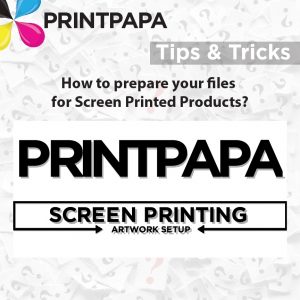[Maximum imprint sizes for garments can vary from brand to brand.]
The following is for reference only but should work on most standard infant, youth and adult t -shirts.
Please verify final imprint sizes with an actual garment or allow for possible size changes prior to production.
| Full Front / Back | 14” Wide x 14” Tall (Maximum imprint size) |
| Left Chest | 3.5” Wide x 3.5” Tall (Average imprint size) |
| Sleeve / Leg | 3.5” Wide x 14” Tall (Maximum imprint size) |
| Infant 6-9 Mos | 3.5” Wide Max & 3.5” Tall Max |
| Infant 9- 12 to 18-24 Mos | 5” Wide Max & 5” Tall Max |
| Youth XS | 9.5” – 11” Wide & 10” – 11” Tall |
| Youth S | 12” – 13” Wide & 11” – 12” Tall |
| Youth M | 14” Wide Average & 14” Tall Average |
| Youth L and Up | 14” Wide Max & 14” Tall Max |
Ideal file formats:
• Adobe Illustrator CS6 or earlier version – (Vector Based) Solid / Hard Edge / Simple Halftone Art All fonts outlined at 100% to size with PMS colors specked out in art file.
• Adobe Photoshop CS6 or earlier version – (Pixel Based) Photographic Reproduction 100% to size or larger @ 300dpi or larger . Compressed files such as jpgs & gifs may have unwanted artifacts that may translate to press. So we do not r ecommend using any compressed file formats.
• Non Camera ready art such as Scans & Hand Drawings will be quot ed on an hourly basis.
• PRINTPAPA prefers to produce our own Color Separations & Films. Unless re -worked by our in-house graphics department we can not guarantee print quality .
• Programs such as V iso, Power Point, Excell, W ord, Paint, etc. are not graphics programs. In most cases we will need to do art to make them usable, but on occasion they may be salvaged.
Garments to use:
• Low quality garments will look washed out compared to 100% cotton Tee.
• The tighter the mesh the more detail can be held.
• This also makes a difference if halftones should be used. (ex: PK Polos = not half tone friendly)
(CMYK) 4 Color Process:
As often as possible use one or two colors to make up your design ex: (C) (M) (Y) (CM) (MY) (YC)
• Tertiary colors made of (CMY) should only be used to create browns or color can become muddy.
• Black should be used for gray scale and the darkening of tints only.
• Rich black (100% CMYK) can be used to make a deeper black but using a spot black is preferred.
• Grays should not include any colors other than black unless it is supposed to have a specific hue such as Warm or Cool Grays. Black dots can be extremely noticeable, so we recommend a gray spot color when possible.
Spot colors:
• PMS Color Swatches should be specked out in all vector art. No CMYK / RGB values are allowed.
• Please review a PMS book for color comparison.
• All WILFLEX colors we carry in stock do not require PMS matches.
Stock colors
Placed images:
Separate files for each placed image @ true 300 dpi & 100% to size or larger is required.
If available please supply the original layered RAW file of each as well with all fonts used.
Dot gain, 1/2 tones, ink bleed:
When INK BLEEDs and 1/2 tones open up in a screen as you produce a job, DOT GAIN occurs.
Most colors do not exceed 30% DOT GAIN but there are exceptions such as Red / White which can gain to over 50% in some cases. To achieve the desired % of color, it is essential to consider INK BLEEDS and DOT GAIN. Making multiple shades of various colors try using increments similar to the ones listed below . Please note that this is a general recommendation, different colors have different attributes such as translucency that will affect how a color is affected by underlaying ink, shirt colors,
underbases, etc…
• To achieve 20% differences after printing ———- (0% – 10% – 40% – 65% – 100%)
• To achieve 33% differences after printing ———- (0% – 20% – 60% – 100%)
• To achieve 50% differences after printing ———- (0% – 35% – 100%)


